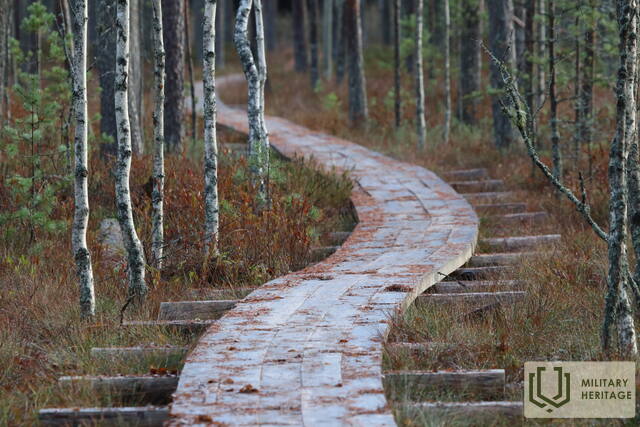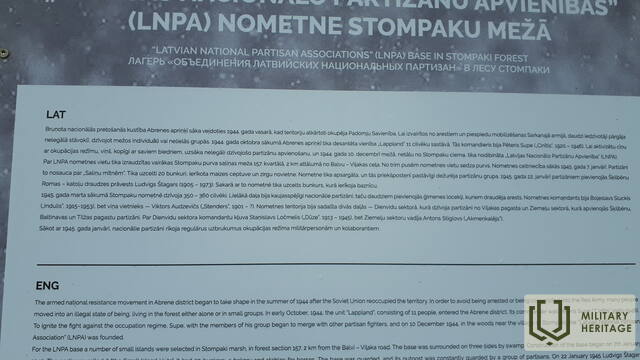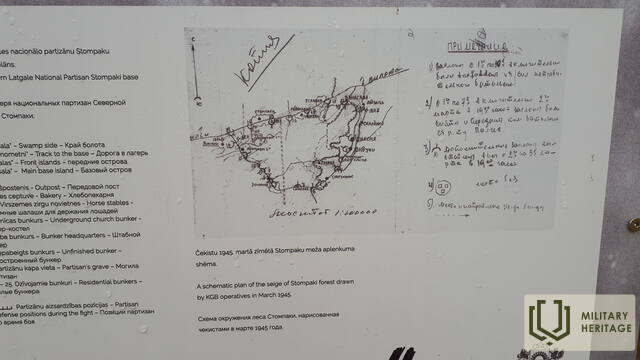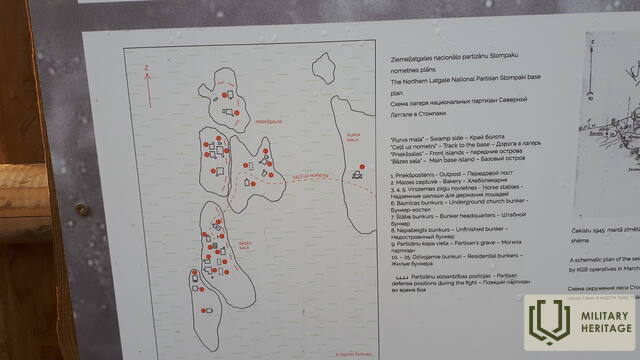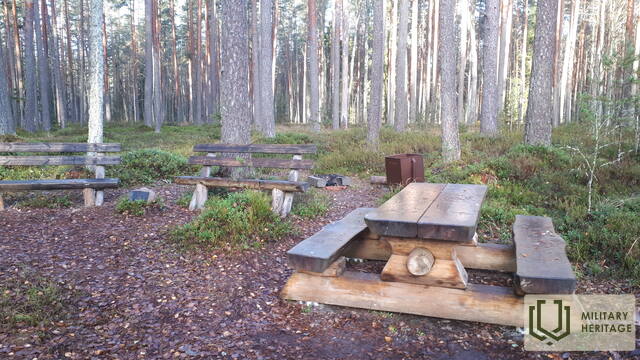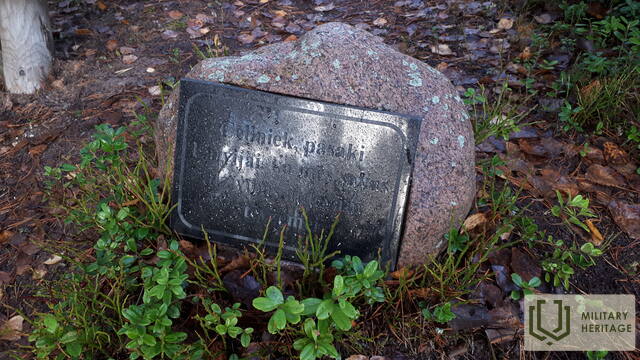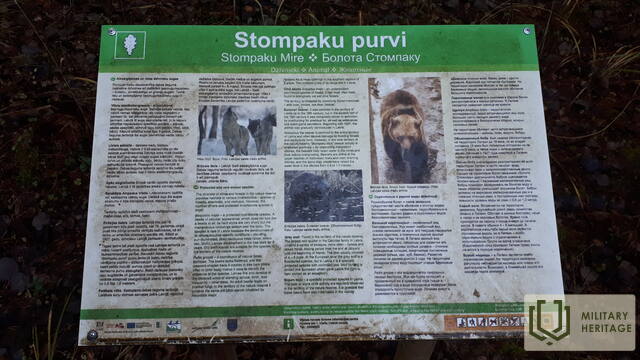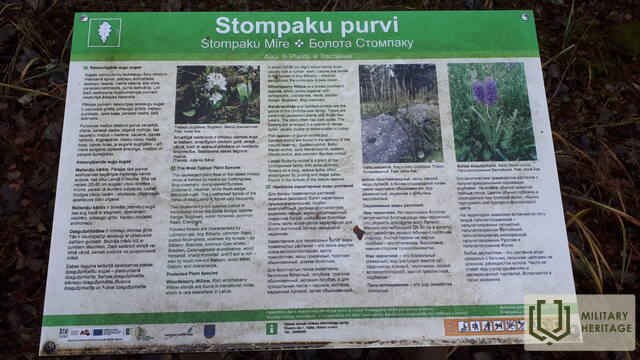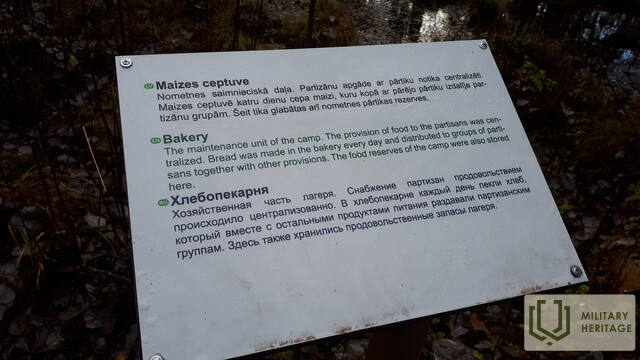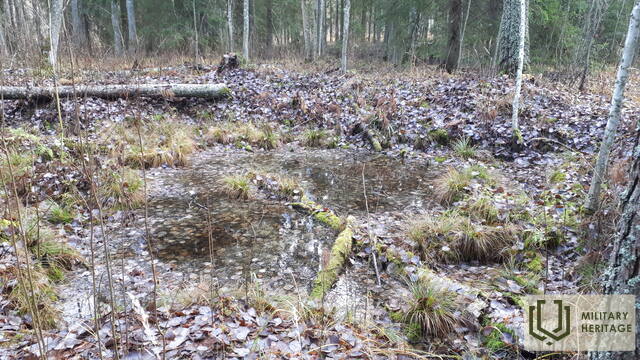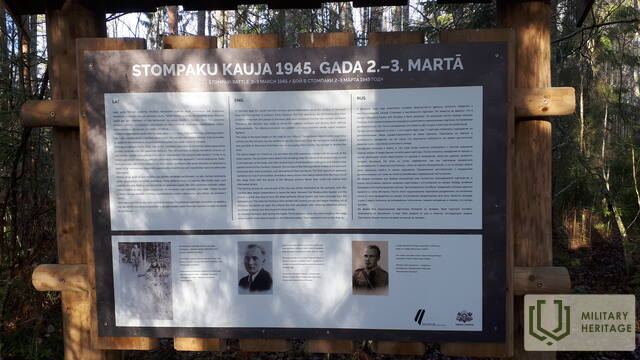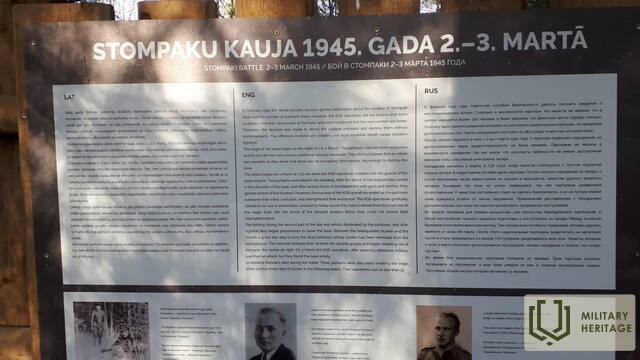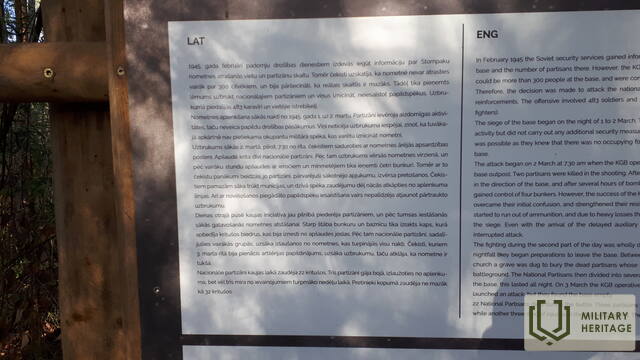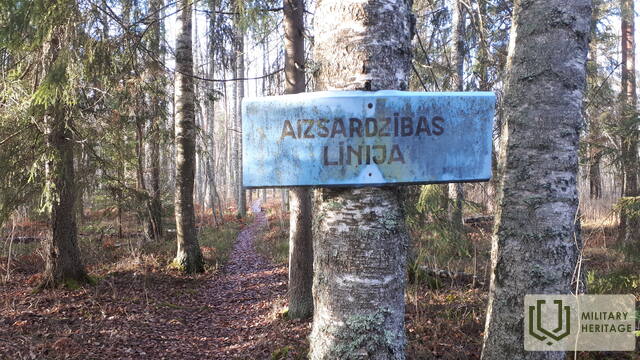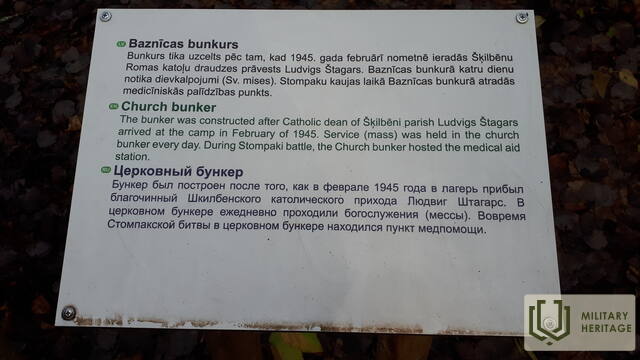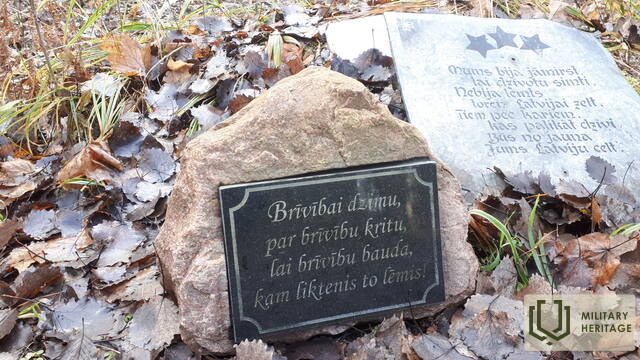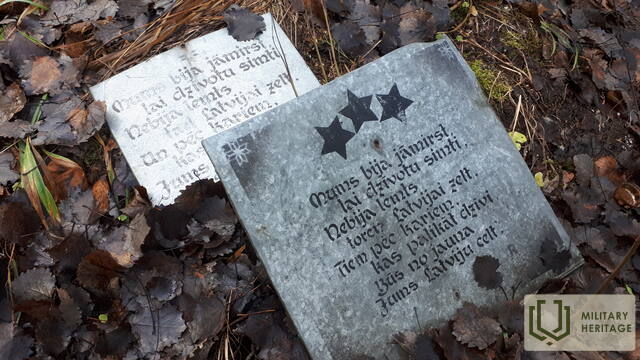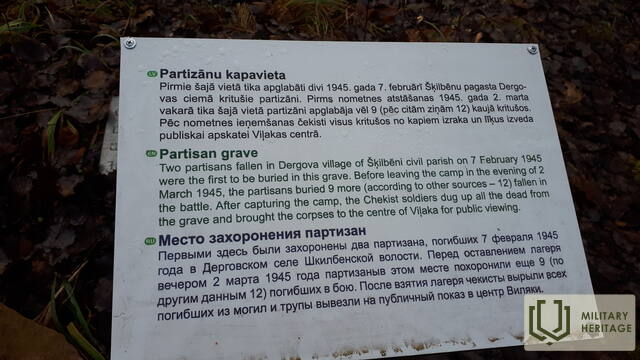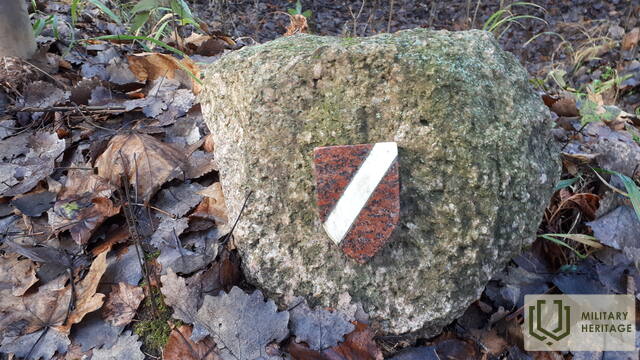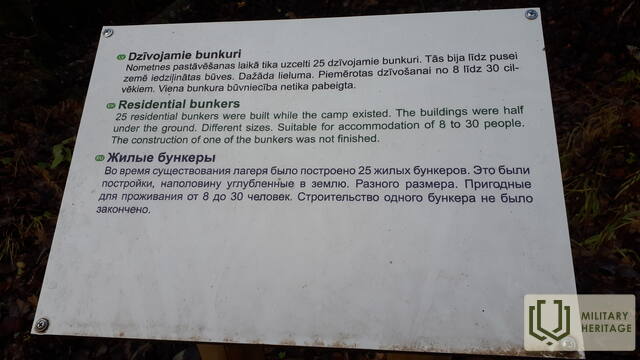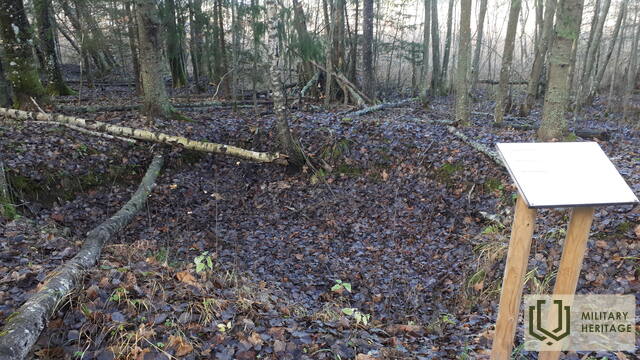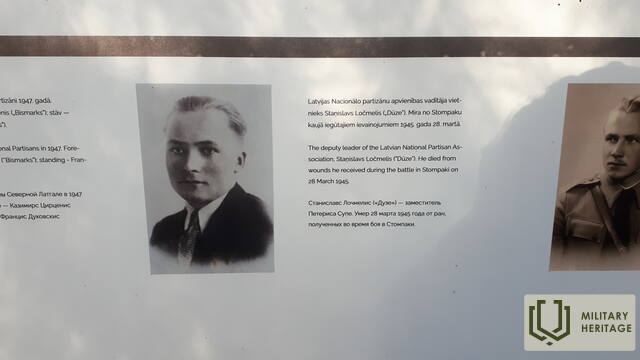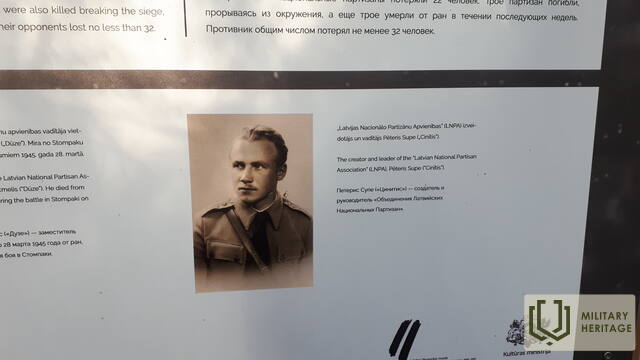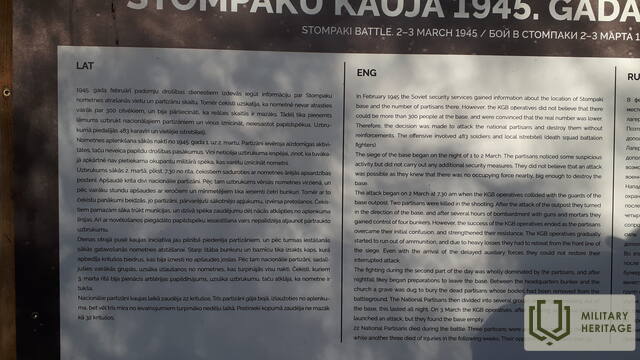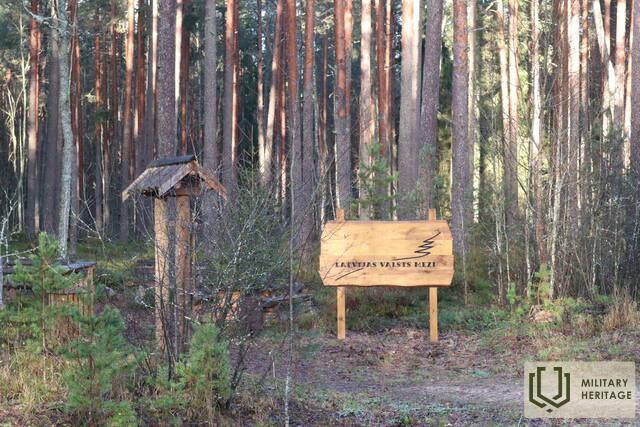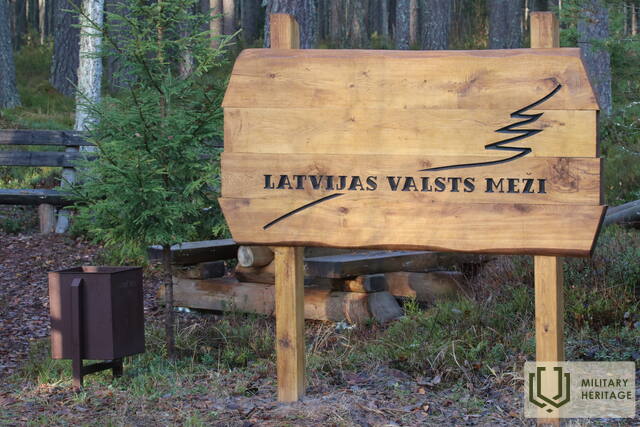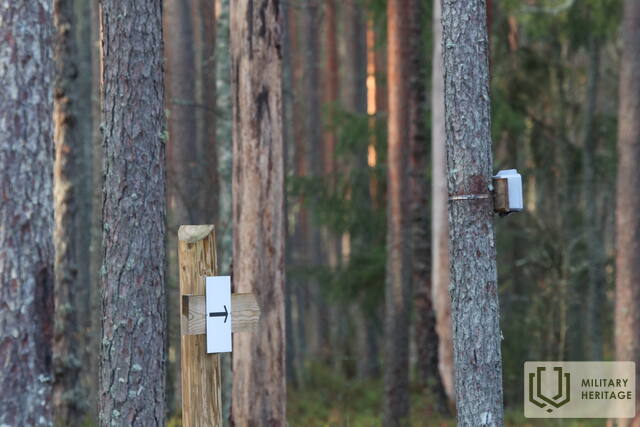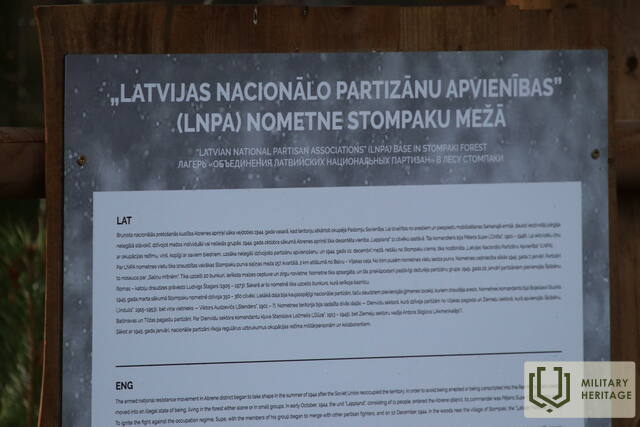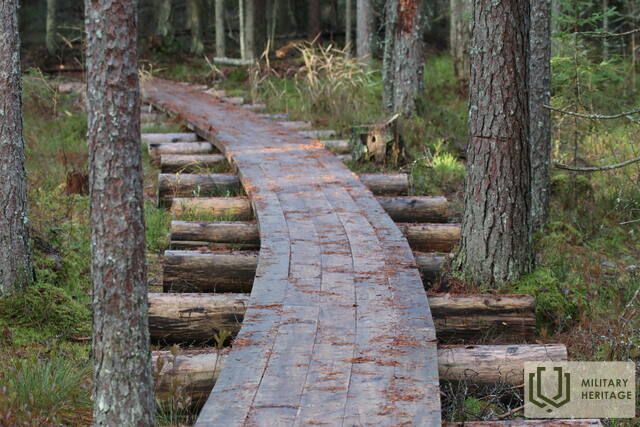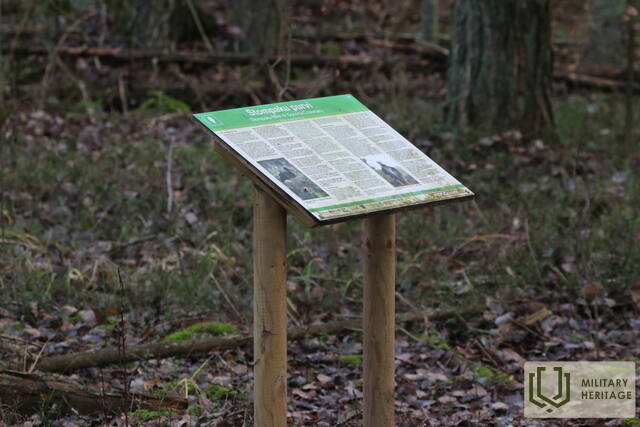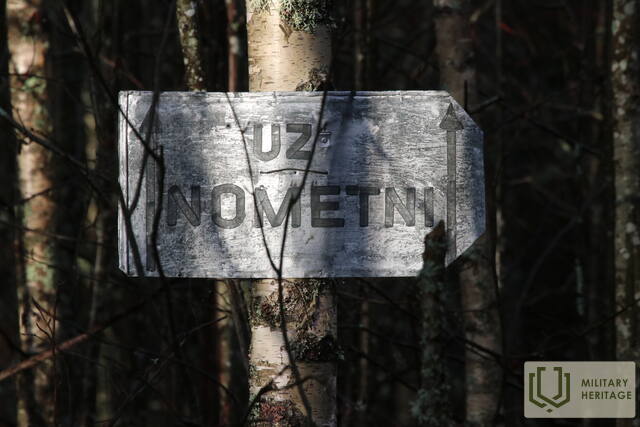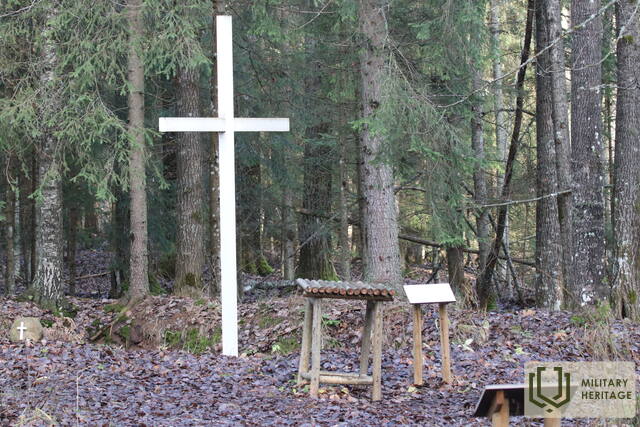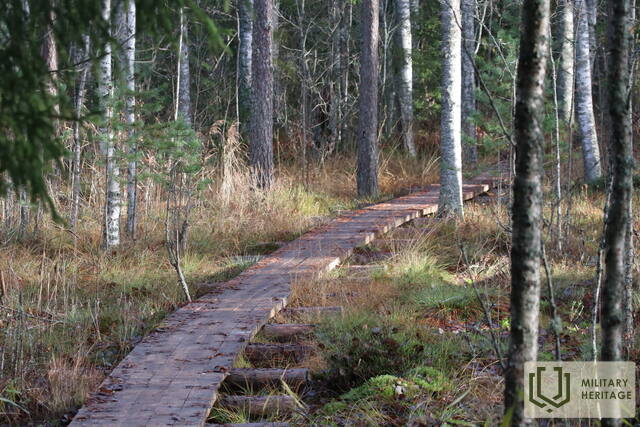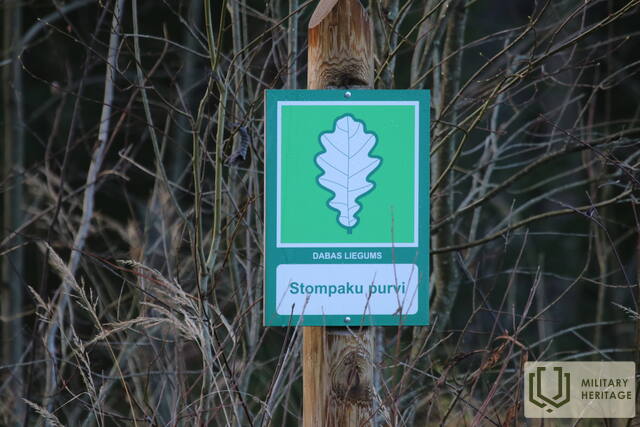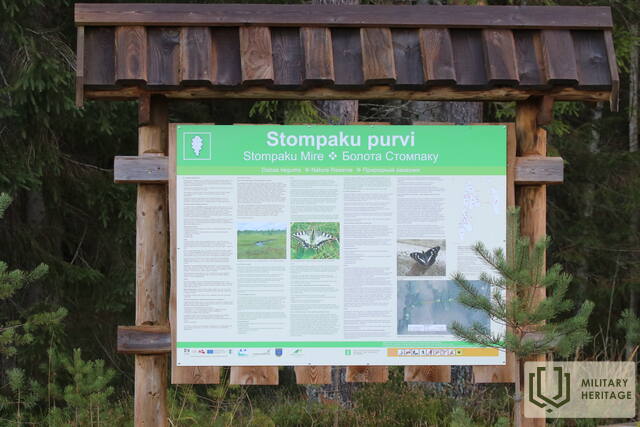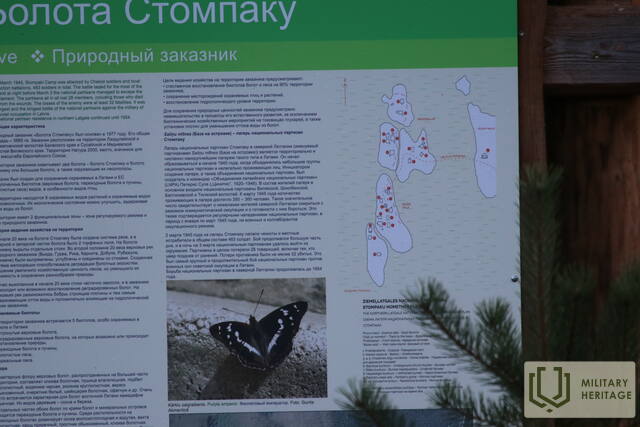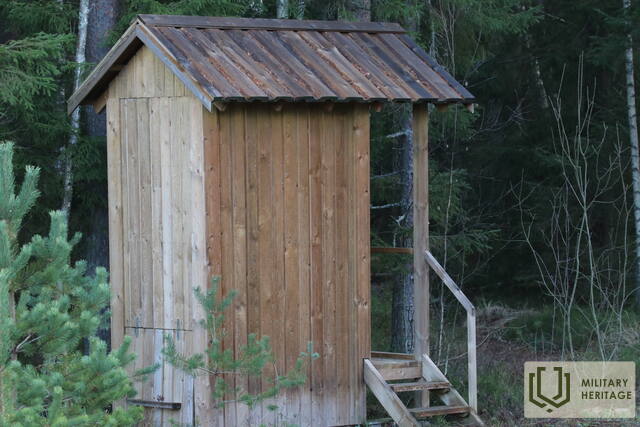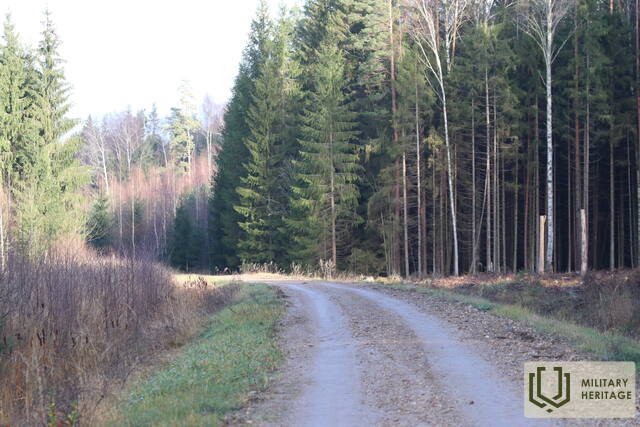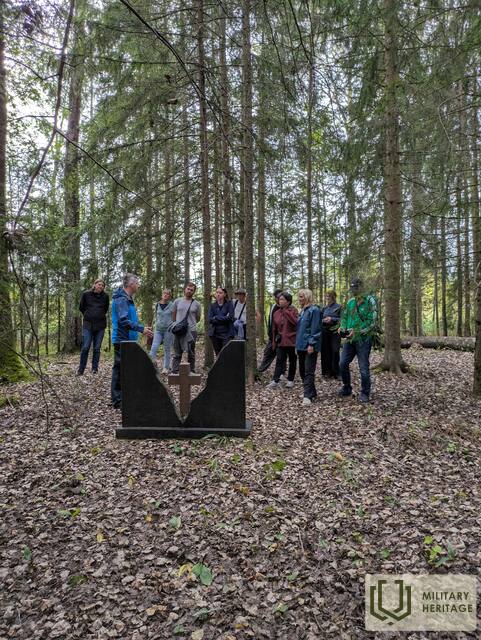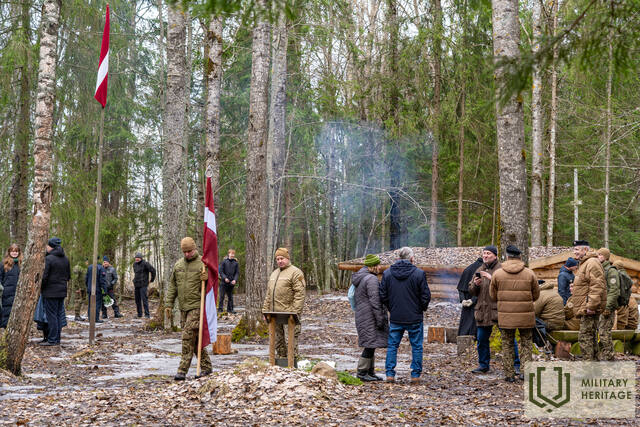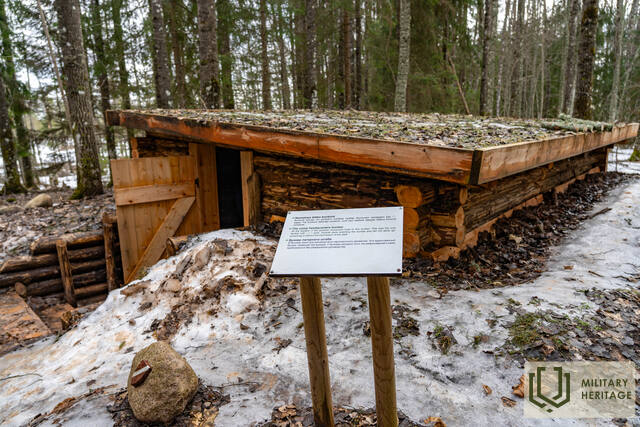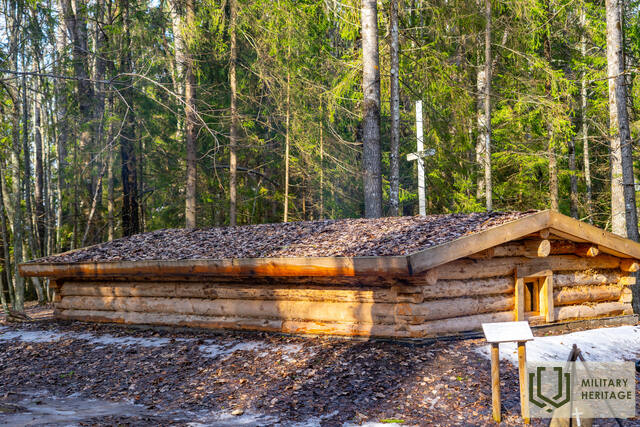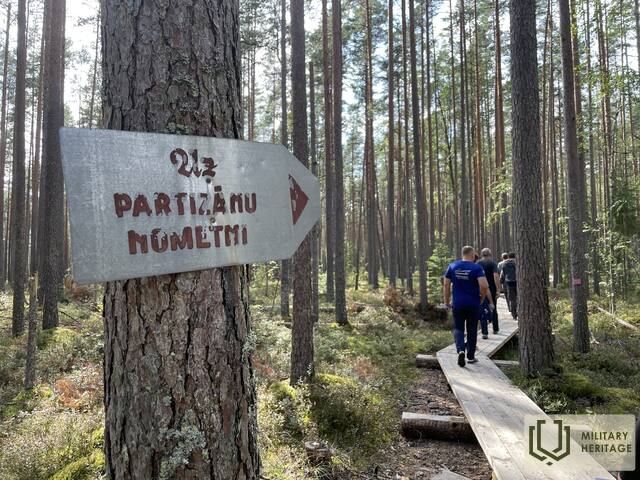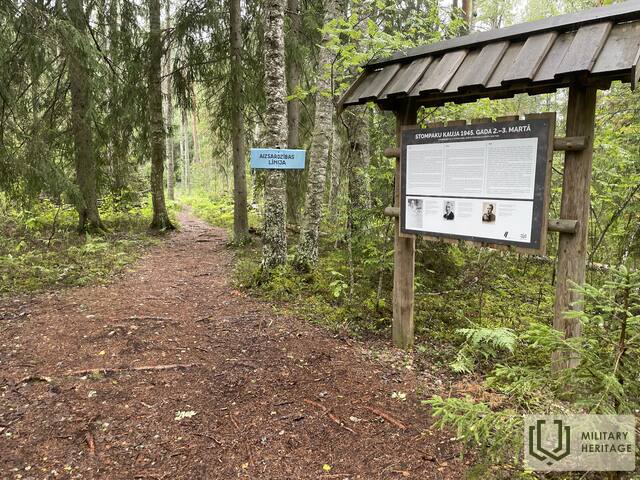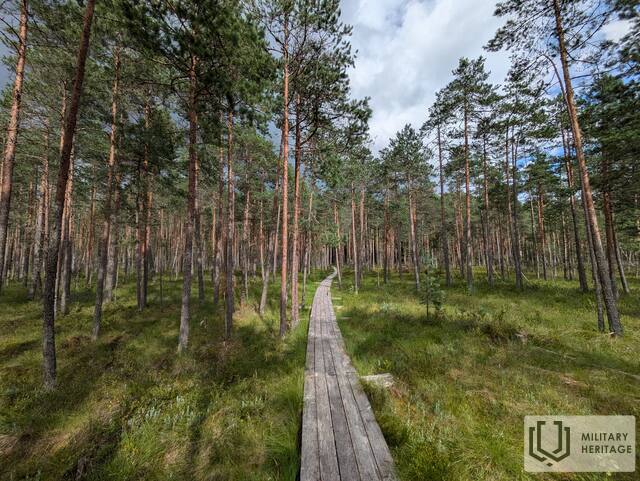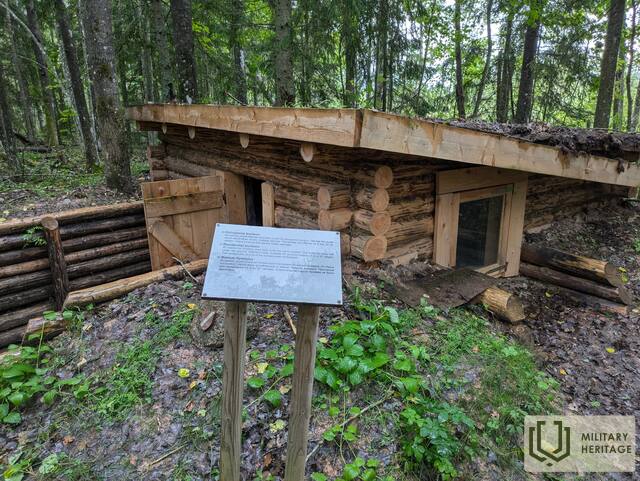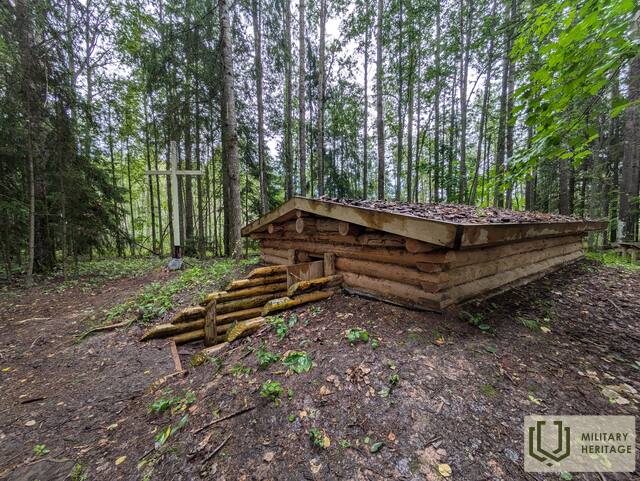Nacionalinių partizanų būstinė gamtos draustinyje „Stompakų pelkės“ (Stompaku purvi)
Mūšio vieta

Antrojo pasaulinio karo metais Stompakų pelkėje buvo viena didžiausių nacionalinių partizanų būstinių Baltijos šalyse. Šiandien ši teritorija priklauso Stompakų gamtos draustiniui. Pelkių salose esančią gyvenvietę galima pasiekti pažymėtu pėsčiųjų taku.
1945 m. pradžioje Stompakų pelkėje buvusioje nacionalinių partizanų būstinėje gyveno 350–360 žmonių, iš jų – 40 50 moterų. Joje buvo 24 gyvenamieji bunkeriai – pusiau į žemę įkasti statiniai, kuriuose galėjo gyventi 3–8 žmonės. Būstinėje taip pat veikė kepykla, požeminė bažnyčia ir trys antžeminės pašiūrės arkliams. Partizanai rengė išpuolius prieš okupacinio režimo pareigūnus.
1945 m. kovo 2–3 d. čia vyko Stompakų mūšis – didžiausias nacionalinių partizanų susirėmimas Latvijoje. Būstinėje buvusius 350–360 partizanų puolė NKVD 143-asis šaulių pulkas ir vietinio stribų (rus. „isterbiteli“) bataliono kovotojai – iš viso 483 vyrai. Mūšis truko visą kovo 2 dieną. Kovo 3-iosios naktį partizanams pavyko ištrūkti iš būstinės ir pasitraukti į ankstesnės bazės vietą. Mūšyje žuvo 28 partizanai, o NKVD neteko 32 karių.
Šiuo metu Stompakų būstinės vietoje yra atkurti trys bunkeriai – bažnyčia, štabas ir gyvenamasis bunkeris, taip pat 21 bunkerio vieta. Įrengti informaciniai stendai apie būstinę ir mūšį. Galima užsisakyti ekskursijas su gidu.
Panaudoti šaltiniai ir literatūra:
1. Gamtos apsaugos taryba, https://www.daba.gov.lv/lv/stompaku-purva-taka
2. Nacionalinė enciklopedija, https://enciklopedija.lv/skirklis/123428-Stompaku-kauja
Susijusios temos
Susijusi istorija
Miško dukra Domicella Dwarf (Lucia)
Domicellai Pundure – 90 metų. 2018 m. gegužės 3 d. Rygos pilyje ji iš prezidento Raimondo Vėjonio rankų gavo Viesturo ordiną už ypatingus nuopelnus nacionalinio pasipriešinimo judėjime ir šalies nepriklausomybės gynime. Domicella Pundure yra paskutinė Stompaku pelkės mūšio liudininkė.
Pēteris Supe – Latvijos nacionalinės partizanų asociacijos įkūrimo iniciatorius
Nuo 1944 iki 1946 metų Pēteriui Supei pavyko suvienyti miškuose išsibarsčiusius nacionalinių partizanų būrius į organizuotą judėjimą, kuris po Antrojo pasaulinio karo dar kelerius metus tęsė kovą prieš Latvijos okupaciją Abrenės apskrityje. Pēteris Supe, pravarde „Cinītis“, buvo vienas iškiliausių Šiaurės Latgalos nacionalinio partizanų judėjimo organizatorių ir vadovų.




